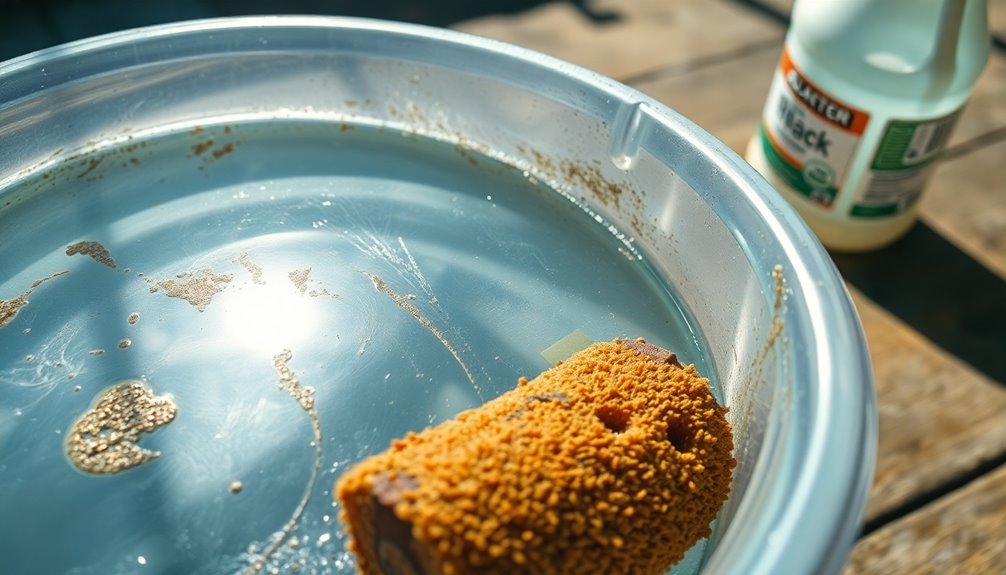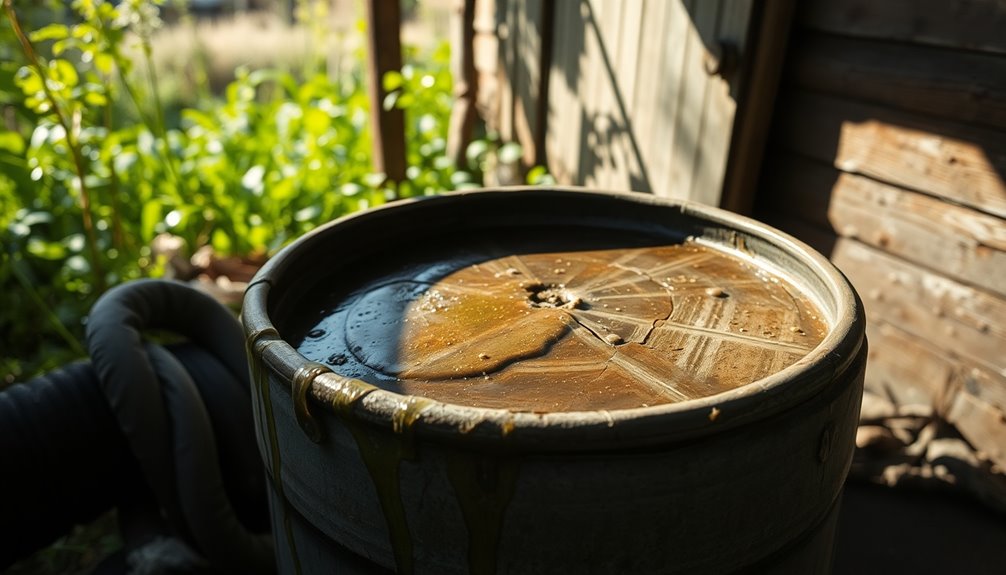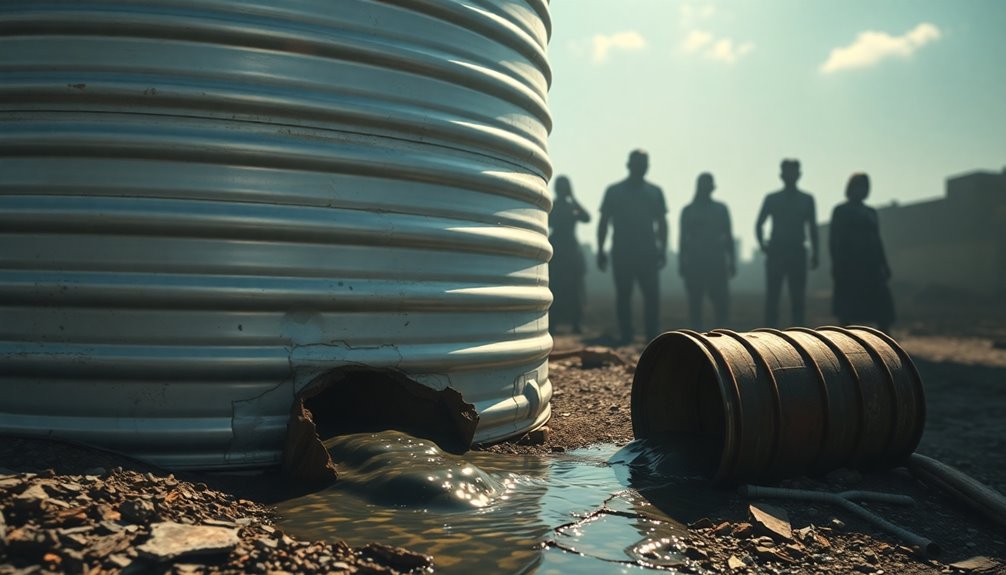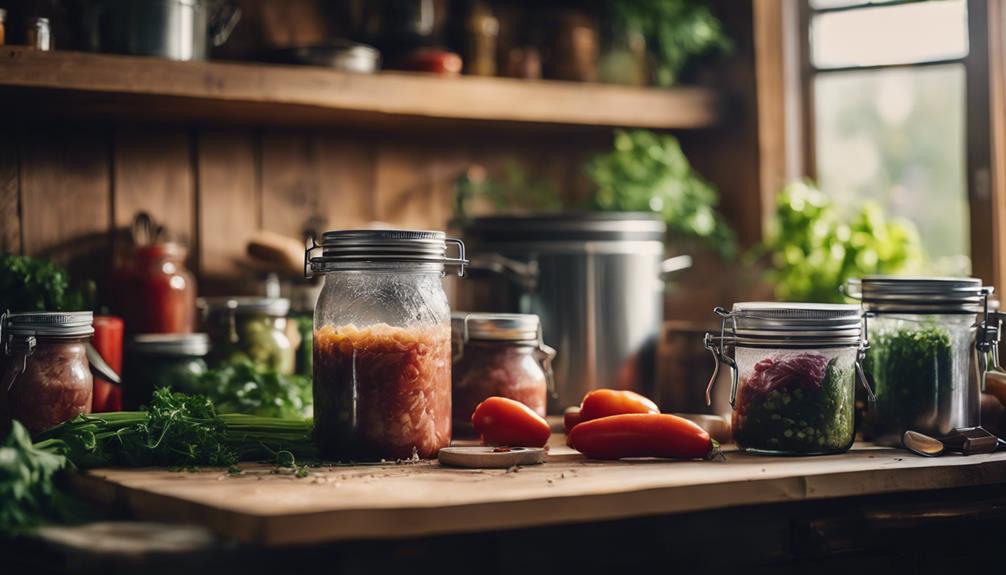When storing water, you can easily make mistakes that jeopardize your survival. First, choose sturdy, non-reactive containers to prevent contamination. Don't forget to clean and sanitize them thoroughly; failing to do so could expose you to harmful bacteria. Store your water in a cool, dark place, away from toxic substances, and regularly check for leaks or contamination. Neglecting these steps may lead to dangerous conditions. Finally, always treat your water before using it to eliminate pathogens. Take these precautions seriously, and you'll guarantee your water is safe for emergencies, uncovering more vital tips to fortify your preparedness.
Key Takeaways
- Using reactive materials for containers can lead to contamination; choose durable, non-reactive options for safe water storage.
- Failing to clean and sanitize containers properly can promote bacterial growth and compromise water quality.
- Storing water in direct sunlight increases the risk of algal growth; always keep containers in shaded areas.
- Neglecting regular maintenance may cause harmful microorganism growth and potential leaks, jeopardizing your water supply.
- Skipping water treatment methods, like boiling or filtration, can expose you to dangerous pathogens and chemicals.
Choosing the Wrong Containers

When you're storing water, choosing the wrong containers can have serious consequences, so it's crucial to pay attention to the material and construction of your containers. Using materials that react with water, like certain metals and plastics, can lead to contamination. You don't want to compromise your water quality due to poor material choices.
Durability matters, too. If you opt for flimsy containers, you're risking leaks and structural failures over time. Make certain your containers have a protective coating to prevent corrosion. Insufficient insulation can also cause problems, as fluctuations in temperature may encourage bacterial growth or even freezing. Additionally, it's important to select containers that are suitable for hazardous liquids to ensure they maintain integrity and prevent leaks.
Consider the size and capacity of your containers; underestimating your needs can lead to frequent refills, increasing contamination risks. On the flip side, if you choose a container that's too large, you may face space issues. Don't ignore seasonal variations in water use or future needs, either. Miscalculating the capacity based on your household demands can leave you short on water when you need it most. Finally, confirm that your containers meet local and international safety standards to avoid significant risks.
Improper Cleaning and Sanitizing

Choosing the right containers is just the beginning; improper cleaning and sanitizing can undermine your efforts to store water safely. First, make sure to clean your containers with warm, soapy water, paying extra attention to those that previously held food or beverages. After scrubbing, rinse them thoroughly to remove any soap residue.
Next, it's vital to sanitize your containers. Fill them with potable tap water and add 1 tablespoon of unscented liquid chlorine bleach per gallon. Shake the container well, let it stand for 1 minute, and then pour out the bleach solution. Remember, using fresh bleach—containing 4 to 6 percent sodium hypochlorite—is important, as it can lose potency over time. Additionally, always ensure that your containers are made of food-grade materials to prevent harmful leaching.
After sanitizing, allow your containers to air dry completely. For long-term water storage, treat the water with 1/8 teaspoon (or 8 drops) of bleach per gallon. Regularly check your stored water every 6 to 12 months for secure lids and any signs of contamination. By properly cleaning and sanitizing your containers, you can greatly reduce the risk of contamination and guarantee your stored water remains safe for consumption.
Incorrect Storage Locations

Storing water in the wrong locations can lead to contamination and spoil its quality. To guarantee your water remains safe, keep it away from direct sunlight to prevent algal growth and maintain a stable temperature. Avoid placing containers near toxic substances like gasoline, pesticides, or areas with poor hygiene. Not only does this prevent contamination, but it also protects the structural integrity of your containers. Safe water storage is crucial to prevent (re-)contamination during storage in homes and ensures an accessible supply to meet household demand.
Here's a quick reference table on incorrect storage locations:
| Storage Factor | Recommendations |
|---|---|
| Outdoor Exposure | Store in shaded areas away from frost. |
| Proximity to Contaminants | Keep away from cleaning supplies and chemicals. |
| Accessibility and Security | Guarantee easy access for inspections, restrict unauthorized entry. |
Always place water containers on stable ground to avoid tipping and secure against flooding. If you're using larger tanks, guarantee the ground can support their weight. By following these guidelines, you can considerably reduce the risk of contamination and guarantee your water is safe for use.
Neglecting Regular Maintenance

Neglecting regular maintenance of your water storage system can quickly lead to serious issues. Over time, sediments, debris, and bacteria accumulate in your tank, compromising water purity. If you don't clean and disinfect regularly, contaminants like rust and algae can thrive, making your water unsafe for consumption. This neglect not only jeopardizes your health but also risks public safety.
Harmful microorganisms can breed in poorly maintained tanks, potentially leading to the spread of diseases. Regular maintenance, including cleaning, is essential to prevent the growth of these pathogens. Ignoring this can expose you to serious health risks, including bacteria like Legionella.
Additionally, regular inspections and timely repairs can extend your tank's lifespan. Neglecting maintenance can cause corrosion and rust, leading to leaks or tank failure, which can be costly. By keeping your system well-maintained, you protect your investment and guarantee maximum efficiency. Regular maintenance also ensures that you are actively monitoring water quality, which is crucial for preventing long-term health issues.
Don't let buildup of silt and debris clog your pipes and lower your water pressure. Regular maintenance guarantees your water storage system runs smoothly, saving you from future headaches and expenses. Prioritize maintenance to keep your water safe and your system efficient.
Ignoring Water Treatment

Regular maintenance of your water storage system isn't enough if you ignore water treatment. Failing to treat your water can expose you to harmful pathogens like bacteria, viruses, and parasites, leading to serious illnesses such as cholera, typhoid, and dysentery. Symptoms from consuming untreated water can include diarrhea, vomiting, and fever, which can be life-threatening, especially in vulnerable populations.
Moreover, untreated water may contain toxic chemicals like heavy metals and pesticides, posing long-term health risks including cancer and neurological damage. In survival situations, this risk skyrockets if you're relying on untreated water sources. Access to safe drinking water is essential to reduce the risk of waterborne diseases and protect your health, as it directly correlates with overall health and bodily functions.
Ignoring water treatment not only jeopardizes your health but also harms the environment. Contaminated water can pollute rivers and lakes, affecting aquatic ecosystems and wildlife. Economically, the absence of clean water can stifle agricultural output and burden healthcare systems due to waterborne diseases.
To safeguard your survival, always prioritize water treatment. Use methods like boiling or filtration systems to guarantee you’re drinking safe water, especially during emergencies. Remember, untreated water isn’t just a convenience; it’s a potential threat to your life. In addition to traditional water treatment methods, it’s also important to familiarize yourself with lifesaving water purification hacks. These can include using natural resources like charcoal or sunlight to purify water in a pinch. By having multiple methods at your disposal, you can ensure that you’re always prepared to access safe drinking water, no matter the circumstances.
Frequently Asked Questions
How Long Can Water Be Stored Safely in Containers?
You can safely store commercially packaged water for about five years. However, if you fill your own containers, it's best to change the water annually to guarantee taste and safety. To maintain freshness, rotate your emergency supply every six to twelve months. Always label your containers with the storage date and contents. This way, you'll keep track of what you have and when it needs to be refreshed.
Can I Reuse Commercial Water Bottles for Storage?
Imagine a garden where each plant thrives in its own pot. You can reuse commercial water bottles for storage, but make sure they're food-grade and clean. Just like a gardener wouldn't plant in a rusty can, you shouldn't store water in bottles that held chemicals. Rinse them well, and keep them in a cool, dark spot. If you notice any cracks or smells, it's time to retire that pot and find a fresh one.
What Are Signs of Contaminated Water?
When checking for signs of contaminated water, look for a cloudy appearance or visible sediment, which indicates dirt or rust. You might notice unusual odors, like a rotten-egg smell or a strong chemical scent. Pay attention to any strange tastes, such as metallic or salty flavors. Low water pressure and corrosion on pipes can also signal contamination. If you see any of these signs, it's best to avoid using the water until it's tested.
How Can I Tell if My Water Is Safe to Drink?
To determine if your water's truly tasty and trustworthy, you need to check a few essential clues. First, look for clear, clean clarity—cloudy water often indicates contamination. Next, sniff for strange scents; any foul odors could signal problems. Finally, test the temperature—extreme heat or cold might affect quality. If you spot any signs of sediment or strange colors, it's best to avoid drinking it until you can confirm it's safe.
What Types of Filters Can Improve Stored Water Quality?
To improve stored water quality, you should consider a few types of filters. Mechanical and sediment filters remove particles like rust and sand, while activated carbon filters eliminate chlorine taste and odors. Reverse osmosis can effectively remove up to 99% of contaminants, and ultrafiltration targets microscopic threats like bacteria. For added safety, UV disinfection can kill harmful microorganisms. Using a combination of these filters will guarantee your water stays clean and safe.
Conclusion
In summary, storing water safely is essential for your survival. By avoiding mistakes like using the wrong containers or neglecting regular maintenance, you can guarantee access to clean water when you need it most. For instance, imagine a family that filled old soda bottles with tap water, only to discover the plastic leached chemicals after months in the sun. Don't let that be you. Take the time to choose the right containers and keep your water safe and ready for any emergency.










